Bank holiday weekends are often a time for people to head to the coast to take advantage of the longer break from work. Many people will be left wishing they’d headed to Northumberland this bank holiday weekend though, to join the tens of lucky people who were rewarded with the incredible sighting of two rare arctic beluga whales just off the beach!
The whales were reported to Sea Watch Foundation by two members of the public. On Sunday 30th August, lucky observer, Sam Newman, spotted an unmistakable white whale from the sweeping beach at Warkworth, Northumberland. His description to Sea Watch’s Sightings Officer, Kathy James seemed to confirm the identity of the species, but Sam also had some photographs which he sent through to Sea Watch yesterday.
Distinctive arched back and bulbous head of beluga whale. Photo by Sam Newman/ Sea Watch Foundation.
The following day, Monday 31st August, holiday-maker, Steve Powis saw two white animals out to sea from the beach and also reported his sighting to the Sea Watch website. “As I walked down to the beach, somebody told me that a ‘white whale had been spotted out there’. I was a bit sceptical and laughed it off as I rounded the corner to the beach and saw a small white boat anchored offshore, so I discounted it altogether. Moments later though, I saw what was clearly a white whale in the sea, and realised that this was the whale I’d been told about!” says observer Steve Powis. “I’ve never seen whales before (except on TV), but this was quite obviously a Beluga! In fact, there were two! They were white, had a bulbous head and no dorsal fin. I saw one about 100-150 metres out and the second one showed itself a distance beyond that. My wife and I watched the nearest one for an hour, as it repeatedly went under and re-surfaced along this small stretch of coastline.”
One of the whales seen on Monday by Steve Powis/ Sea Watch Foundation.
“There were locals who were walking their dogs who have been walking the beach all their life and have never seen a whale in all that time”, says Deb Powis who filmed the event on her mobile phone.
You can view Deb’s beluga video here.
Breaking news! Two belugas whales were also sighted from South Shields pier on September 1st around midday. Sea Watch Foundation have today received two separate reports from different observers at the same location. Although awaiting further pictures there is video footage of one of the animals at https://www.youtube.com/watch?v=To96_PUA9rM. It is thought that these may be the same two animals which were spotted off Warkworth earlier in the week, although the possibility of more than two animals having made the incredible journey to English shores cannot be ruled out.
Recently, the National Whale and Dolphin watch saw hundreds of people travelling to the coast or offshore in boats to take part in Sea Watch’s annual event. Many during the week had to battle unseasonally poor weather – high winds and relatively cold temperatures. This seems to have been the story of the summer in many parts of the British Isles. So it was fitting that on Thursday 30th July, when Gordon Watson visited the coast of Co. Antrim between Portbraddan and Dunseverick, primarily to photograph jellyfish, he was surprised to see below the cliffs the arching back of a beluga or white whale. “The beluga sighting during the National Whale and Dolphin Watch was a real surprise for us at Sea Watch” addss Kathy James, Sightings Officer for Sea Watch Foundation. “It was perhaps more of a surprise however, to hear of two more belugas many miles away off the Northumberland coast”, continues Kathy.
Belugas are normally found at least two thousand miles away to the north either around Greenland or in the Barents Sea from the island archipelago of Svalbard eastwards, where some thousands of animals live amongst the ice.
 Beluga whale surfacing near Dunseverick, Co. Antrim, 30 July. Photo by Gordon Watson/ Sea Watch Foundation
Beluga whale surfacing near Dunseverick, Co. Antrim, 30 July. Photo by Gordon Watson/ Sea Watch Foundation
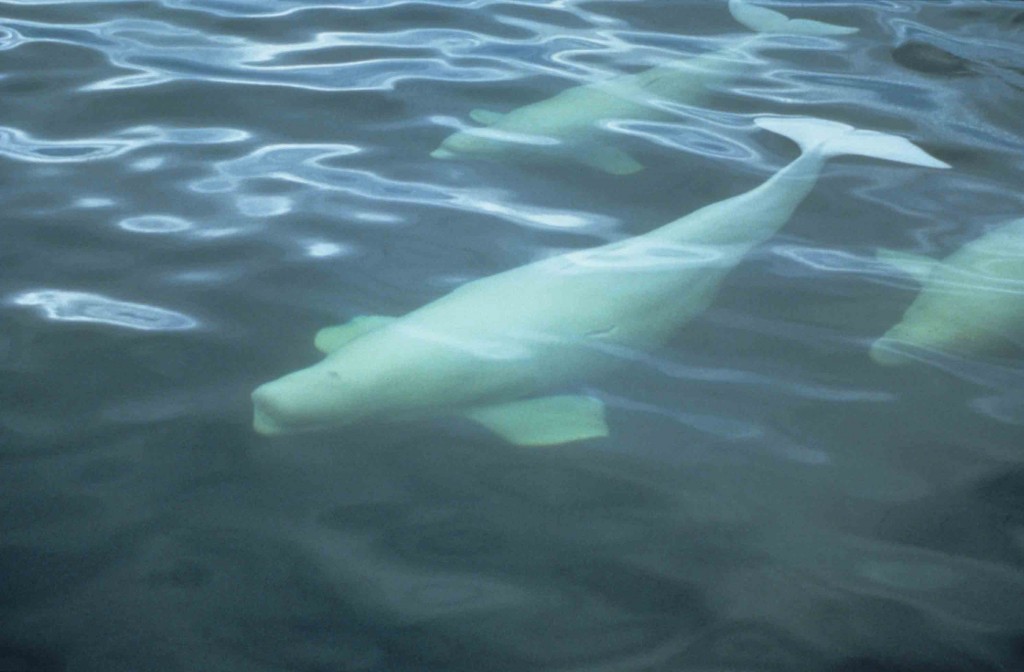 Beluga displaying its petal-shaped pectoral fins by T Henningsen/ Sea Watch Foundation
Beluga displaying its petal-shaped pectoral fins by T Henningsen/ Sea Watch Foundation
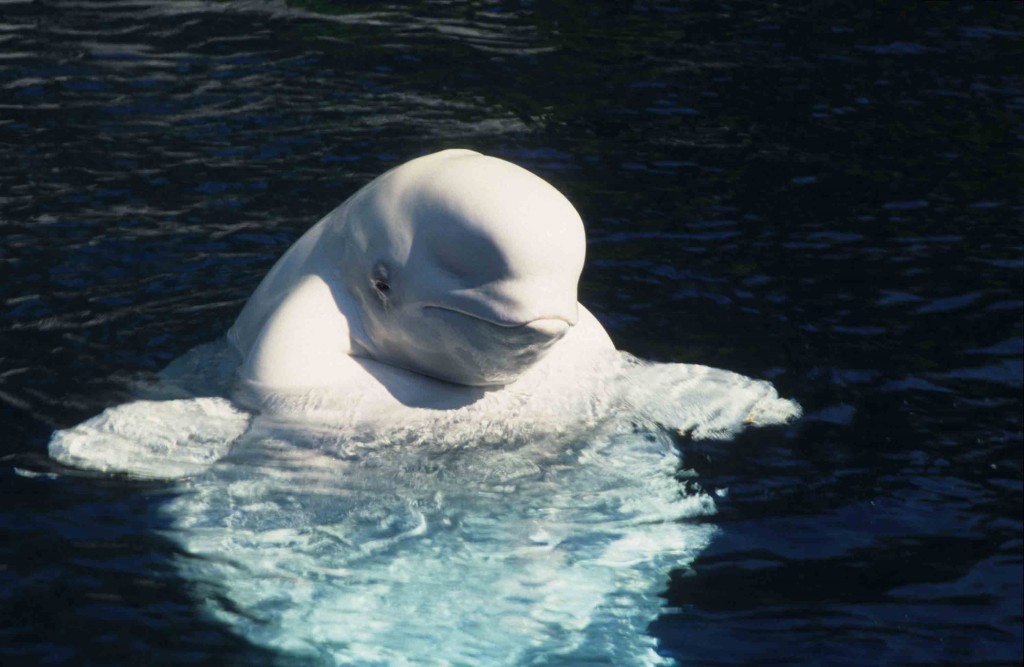 Belugas, the white whales, are very distinctive. Photo by C Swann/ Sea Watch Foundation.
Belugas, the white whales, are very distinctive. Photo by C Swann/ Sea Watch Foundation.
Belugas are small whales about 5-6 metres in length, and adults distinctively are pure white with a small bulbous head, and displaying when surfacing an arched smooth back without any dorsal fin.
Until the past month, there have been only 17 records of belugas in all of Britain and Ireland (ten in the last thirty years). Thirteen of the seventeen records come from Scotland. Most sightings have been made between June and September.
Figure 1. Map showing Beluga whale sightings in the UK over the past fifty years
(source: Sea Watch Foundation)
So what brings these individuals such a distance from the arctic into our waters? Dr Peter Evans, Director of the Sea Watch Foundation, commented: “These are not the first arctic species to occur in Britain this year. Back in February, the first European sighting of a bowhead whale was captured on a smart phone in the Isles of Scilly. In that instance it was thought that the fragmentation of floating ice may have resulted in whales typically associated with pack ice, straying much further south. Whether the same has occurred in the case of these belugas is not clear, but sea temperatures have been unusually low this summer.”
Dr Evans noted that “Sea surface temperatures in the northeastern North Atlantic (between the British Isles and Iceland) early in the summer (May) have averaged more than one degree C lower than the average for the same period over the past twelve years.”
Figure 2. Average early summer sea surface temperatures in the northeastern North Atlantic from 2003-15 (Source: MODIS NIR)
Dr Evans added: “Although the overall trend in average annual sea surface temperatures in UK coastal waters has been upwards since the 1980s increasing by 0.2-0.8oC per decade, the increase has been much greater in the southern North Sea than off NW Britain and Northern Ireland where there has actually been very little change. Some years have actually seen a temporary fall in temperature in northern Britain, possibly due to more unstable weather patterns in the Atlantic. This year seems to be such a case. This may in part explain why arctic species like beluga and bowhead have turned up in our coastal waters during 2015. Belugas do occasionally come south from the Barents Sea along the west coast of Norway, but it is very rare for them to travel as far south as NE England.”
If you are lucky enough to see a live beluga whale or any other cetacean species, then please let us know using our online sightings form: http://www.seawatchfoundation.org.uk/sightingsform/.

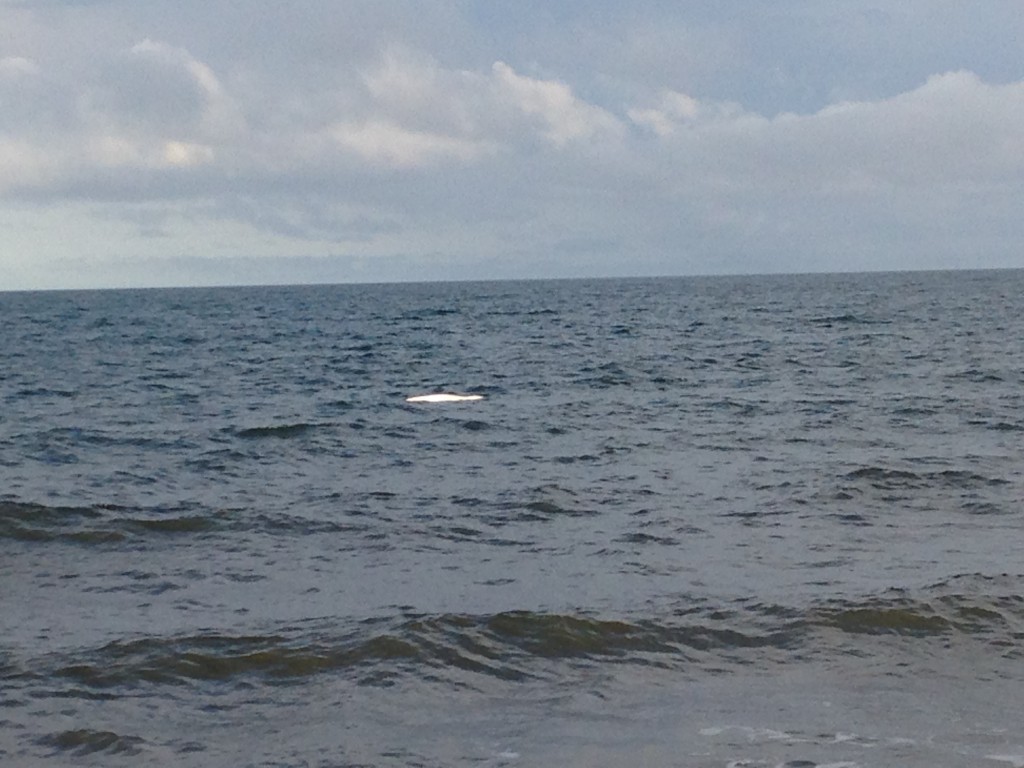
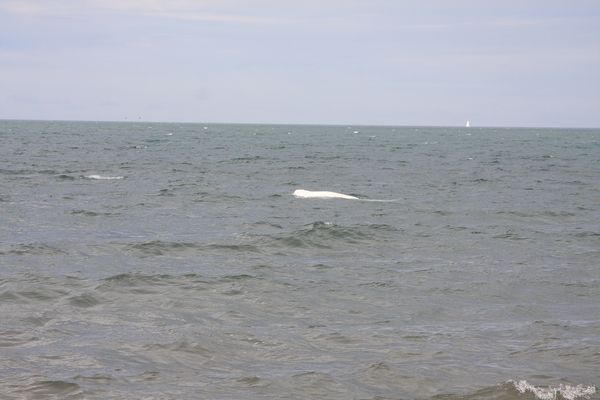
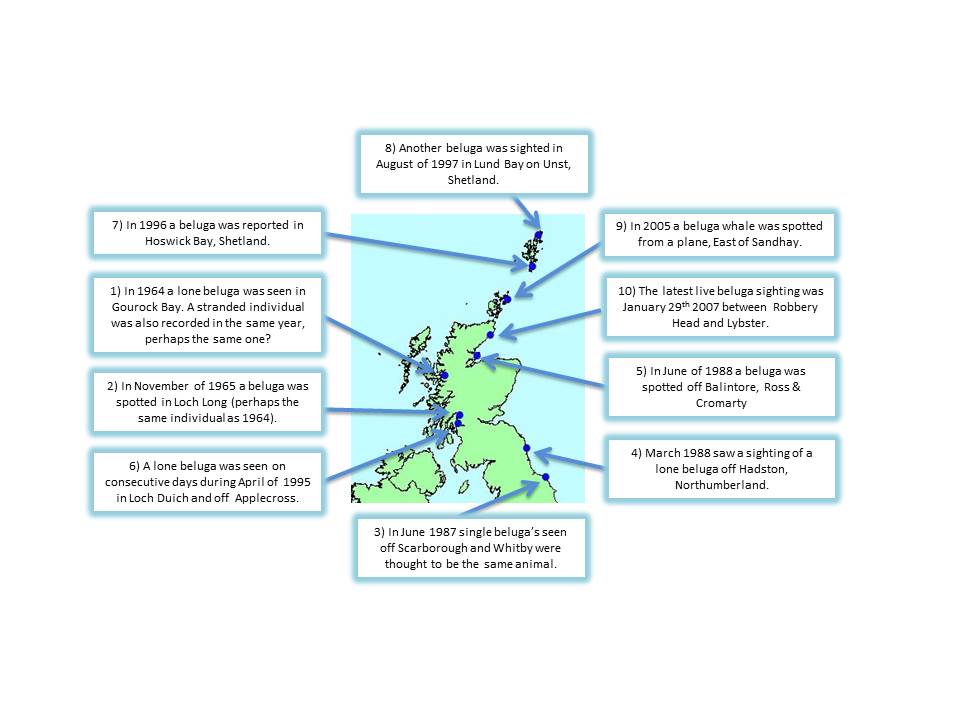

























Pingback: Beluga Whale in the Thames – UK Wildlife